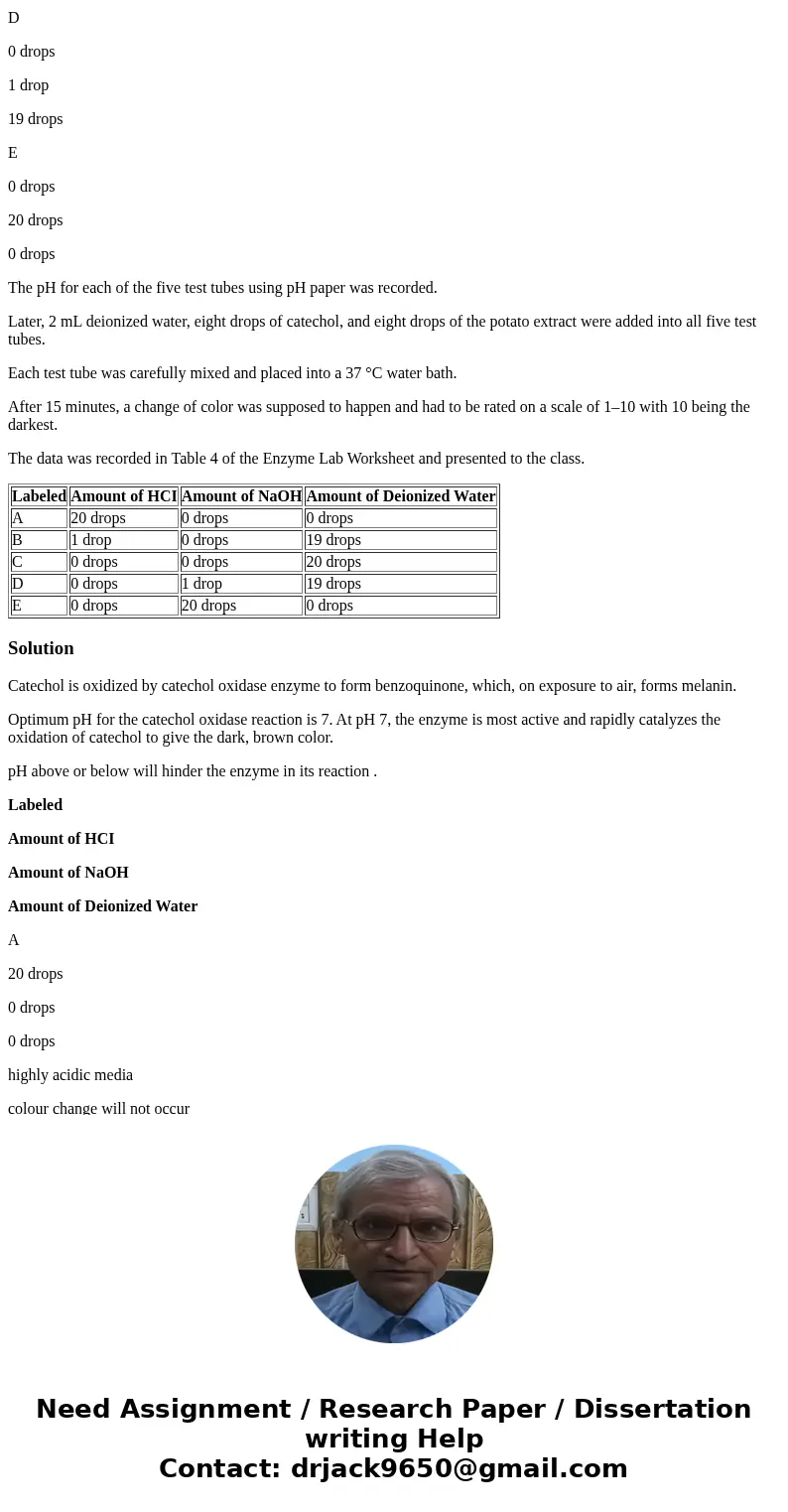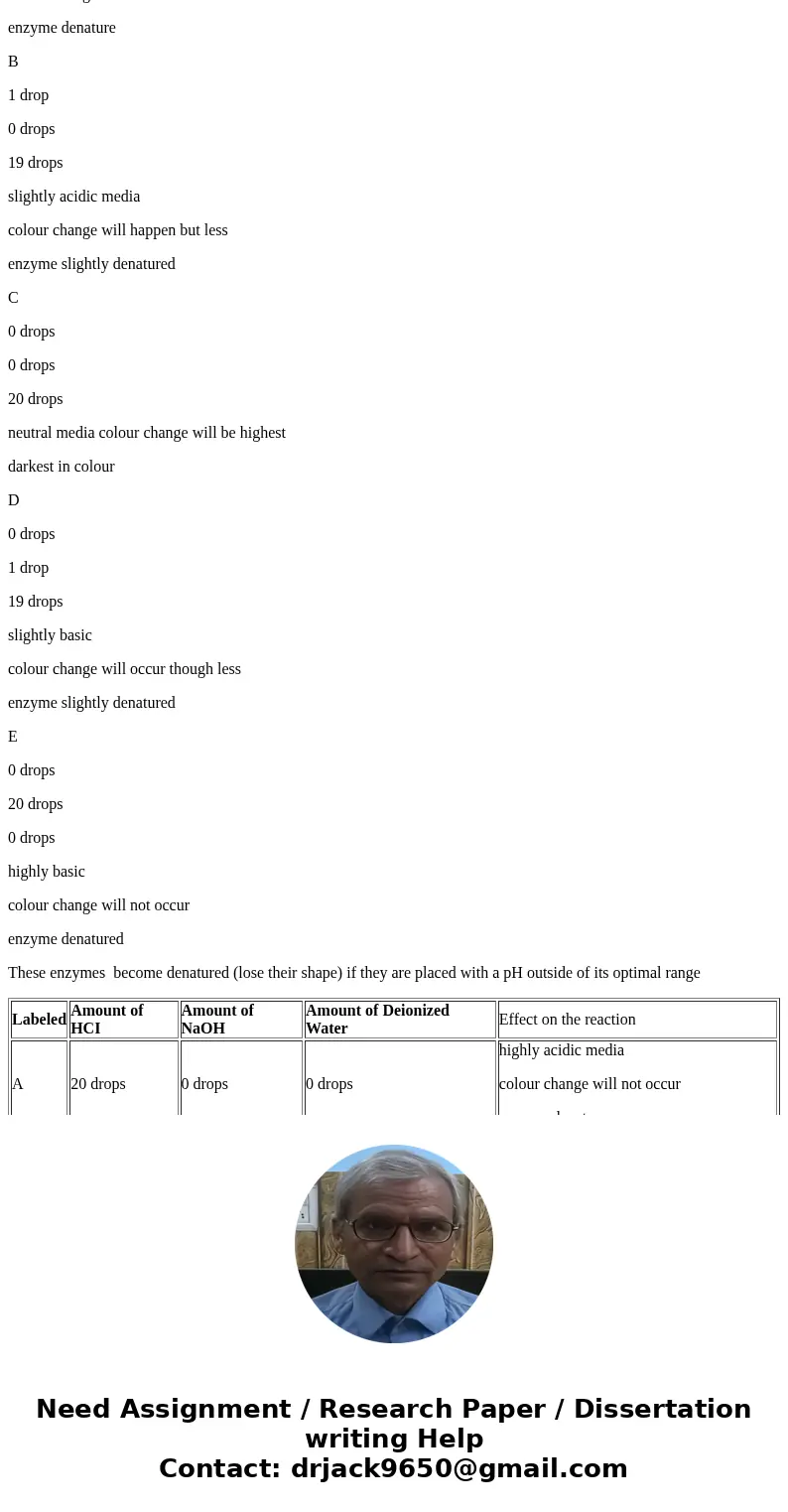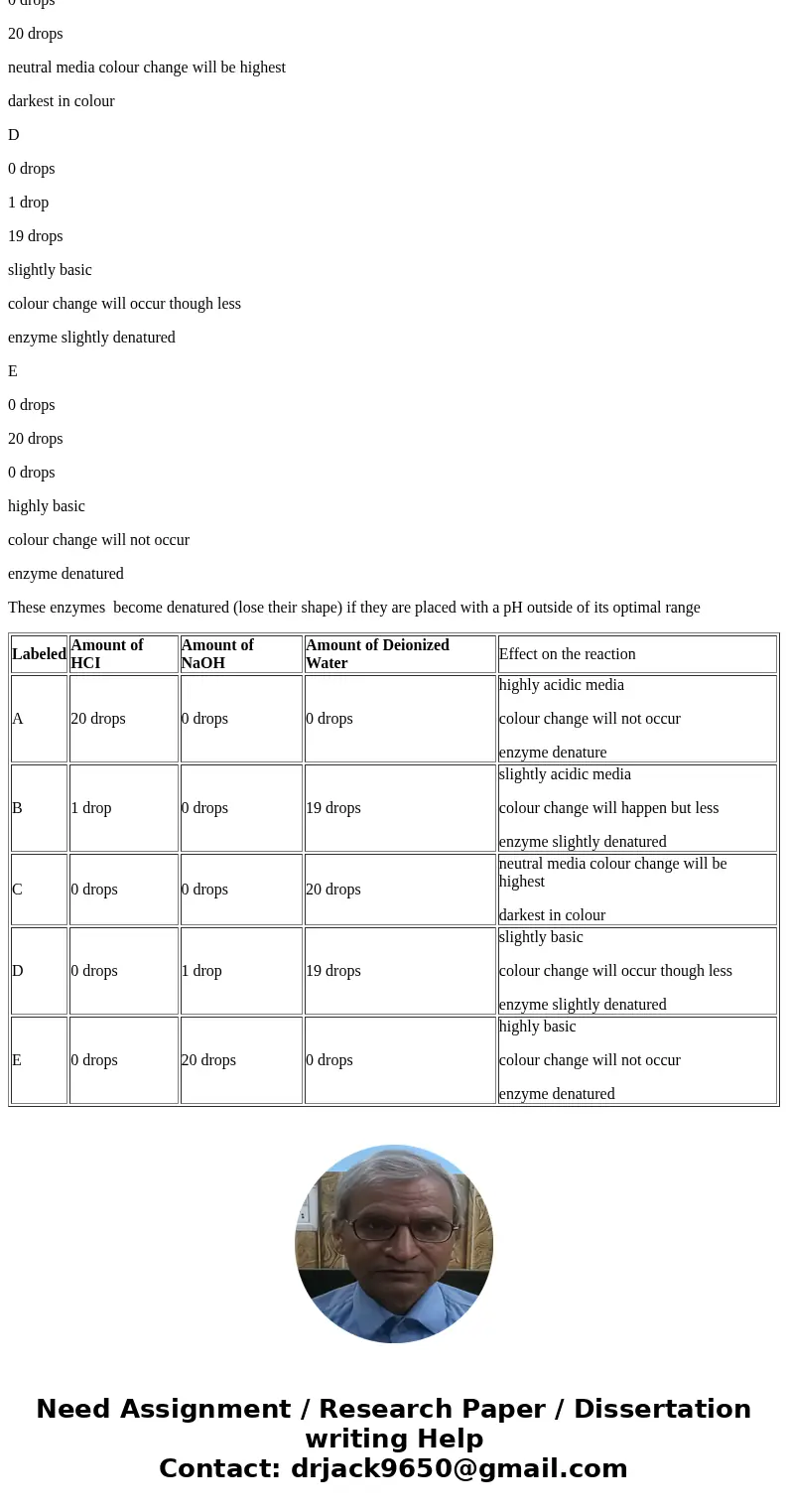Experiment IV Effect of pH on the Rate of Enzyme Reaction 6
Experiment IV: Effect of pH on the Rate of Enzyme Reaction
6. In this experiment, was the enzyme denatured or just slowed down at any of the pH values tested? What is the evidence?
Materials for Experiment IV
Five test tubes
Test tube rack
Disposable pipettes
Potato extract
Deionized water
Water bath, 37 degrees Celsius (°C)
0.1 molar (M) sodium hydroxide (NaOH)
0.1 M hydrochloric acid (HCl)
pH paper
Procedure for Experiment IV
Five test tubes were taken and labeled A to E.
According to table 7.4, drops of 0.1 M hydrochloric acid (HCI), 0.1 molar (M) sodium hydroxide (NaOH), and deionized water were added to five test tubes.
Table 7.4
Labeled
Amount of HCI
Amount of NaOH
Amount of Deionized Water
A
20 drops
0 drops
0 drops
B
1 drop
0 drops
19 drops
C
0 drops
0 drops
20 drops
D
0 drops
1 drop
19 drops
E
0 drops
20 drops
0 drops
The pH for each of the five test tubes using pH paper was recorded.
Later, 2 mL deionized water, eight drops of catechol, and eight drops of the potato extract were added into all five test tubes.
Each test tube was carefully mixed and placed into a 37 °C water bath.
After 15 minutes, a change of color was supposed to happen and had to be rated on a scale of 1–10 with 10 being the darkest.
The data was recorded in Table 4 of the Enzyme Lab Worksheet and presented to the class.
| Labeled | Amount of HCI | Amount of NaOH | Amount of Deionized Water |
| A | 20 drops | 0 drops | 0 drops |
| B | 1 drop | 0 drops | 19 drops |
| C | 0 drops | 0 drops | 20 drops |
| D | 0 drops | 1 drop | 19 drops |
| E | 0 drops | 20 drops | 0 drops |
Solution
Catechol is oxidized by catechol oxidase enzyme to form benzoquinone, which, on exposure to air, forms melanin.
Optimum pH for the catechol oxidase reaction is 7. At pH 7, the enzyme is most active and rapidly catalyzes the oxidation of catechol to give the dark, brown color.
pH above or below will hinder the enzyme in its reaction .
Labeled
Amount of HCI
Amount of NaOH
Amount of Deionized Water
A
20 drops
0 drops
0 drops
highly acidic media
colour change will not occur
enzyme denature
B
1 drop
0 drops
19 drops
slightly acidic media
colour change will happen but less
enzyme slightly denatured
C
0 drops
0 drops
20 drops
neutral media colour change will be highest
darkest in colour
D
0 drops
1 drop
19 drops
slightly basic
colour change will occur though less
enzyme slightly denatured
E
0 drops
20 drops
0 drops
highly basic
colour change will not occur
enzyme denatured
These enzymes become denatured (lose their shape) if they are placed with a pH outside of its optimal range
| Labeled | Amount of HCI | Amount of NaOH | Amount of Deionized Water | Effect on the reaction |
| A | 20 drops | 0 drops | 0 drops | highly acidic media colour change will not occur enzyme denature |
| B | 1 drop | 0 drops | 19 drops | slightly acidic media colour change will happen but less enzyme slightly denatured |
| C | 0 drops | 0 drops | 20 drops | neutral media colour change will be highest darkest in colour |
| D | 0 drops | 1 drop | 19 drops | slightly basic colour change will occur though less enzyme slightly denatured |
| E | 0 drops | 20 drops | 0 drops | highly basic colour change will not occur enzyme denatured |




 Homework Sourse
Homework Sourse